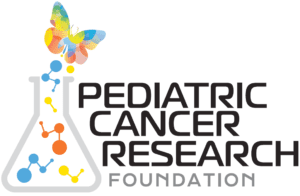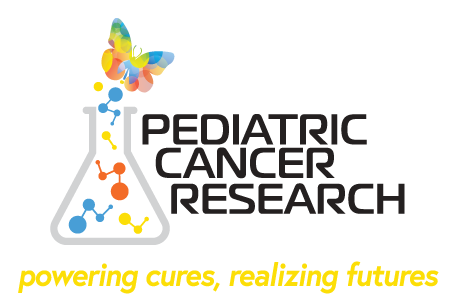By Amanda Saratsis, MD | June 21, 2023
As we touched on in last month’s blog post, more children are living longer and even achieving cures in pediatric cancer, largely due to scientific advances driven by the kind of groundbreaking research that PCRF supports. This month, we chose to focus on one of the biggest success stories in pediatric oncology: treatment for the most common cancer in children, acute lymphocytic leukemia, or ALL.
ALL is a type of cancer of the blood and bone marrow, and in comparison to outcomes in the 1980s, today’s treatments for children with ALL can result in an actual cure. It is diagnosed in about 4,000 people in the United States each year, with the majority being under the age of 18. The peak age of diagnosis is between two and ten years old, and the five-year survival rate is approximately 85%.
ALL occurs due to a mutation bone marrow cell DNA, which results in continuous, unchecked cell growth and division into new, immature cells that develop into leukemic white blood cells called lymphoblasts. These lymphoblasts do not function properly as white blood cells, and crowd out healthy, normal cells trying to develop in the bone marrow compartment.

Without treatment, ALL can rapidly progress and spread throughout the body. Treatment for ALL may span two to three years, and occurs in separate phases. The first is Induction therapy, to kill leukemia cells in the blood and bone marrow, and to restore normal blood cell production. Next is Consolidation therapy, also known as post-remission therapy, to destroy any remaining leukemia in the body. The following is Maintenance therapy, to prevent leukemia cells from regrowing, and this is where major advances in disease management have been accomplished. Lastly is Preventive treatment to the spinal cord, which may also occur during each phase of therapy, where chemotherapy drugs are injected directly into cerebrospinal fluid via a lumbar puncture.

Importantly, there are a variety of treatment modalities for ALL, many of which are new and very exciting. Patients often receive a combination of therapies throughout the course of their treatment, which may include:
- Chemotherapy using drugs that kill cancer cells for induction, consolidation and maintenance therapy.
- Targeted therapy with drugs designed to target specific genetic abnormalities in leukemic cells to cause cell death. Targeted therapy can be used alone or in combination with chemotherapy for induction, consolidation or maintenance therapy.
- Radiation therapy using protons of photons to kill cancer cells. Radiation therapy is often used if ALL spreads into the central nervous system (CNS).
- Bone marrow transplant, also known as a stem cell transplant, may be used as consolidation therapy or for treating relapse. A patient is given high dose chemotherapy or radiation to destroy any leukemic cells in the bone marrow, then administered new bone marrow from a compatible donor (allogenic transplant).
- Immunotherapy using chimeric antigen receptor (CAR)-T cells. For this strategy, a patient’s own germ-fighting T cells are collected, engineered to target leukemic cells, then readministered to the patient. This approach is typically reserved for consolidation and maintenance therapy.
- Clinical trials. Another option for ALL treatment includes going on a clinical trial, which is designed to test new therapeutic agents and regimens.

When queried about the greatest achievements in pediatric oncology to date, our expert researchers and clinicians resoundingly cited ALL management as remarkable today compared to only 30-40 years ago. This is a true success story in pediatric oncology, and an area where translational research has made a tremendous impact due to advancements in clinical care through identification of more effective treatments. We’re particularly proud of the research PCRF has funded in this area, including most recently, a study to explore a potential treatment for relapsed childhood ALL, which helped gain insight into whether certain subtypes of ALL would benefit more from this treatment than others and why. It is only through continued study and research that this has become a reality for these children. In turn, because children with ALL are now surviving their disease, monitoring for late effects of therapy and disease relapse, as well as providing psychological support to the patient and their family, is a necessity and area for additional exploration in the clinical research community.
Amanda Saratsis, MD, Board Member, Scientific Affairs
Jeri Wilson, Executive Director, CSPG





